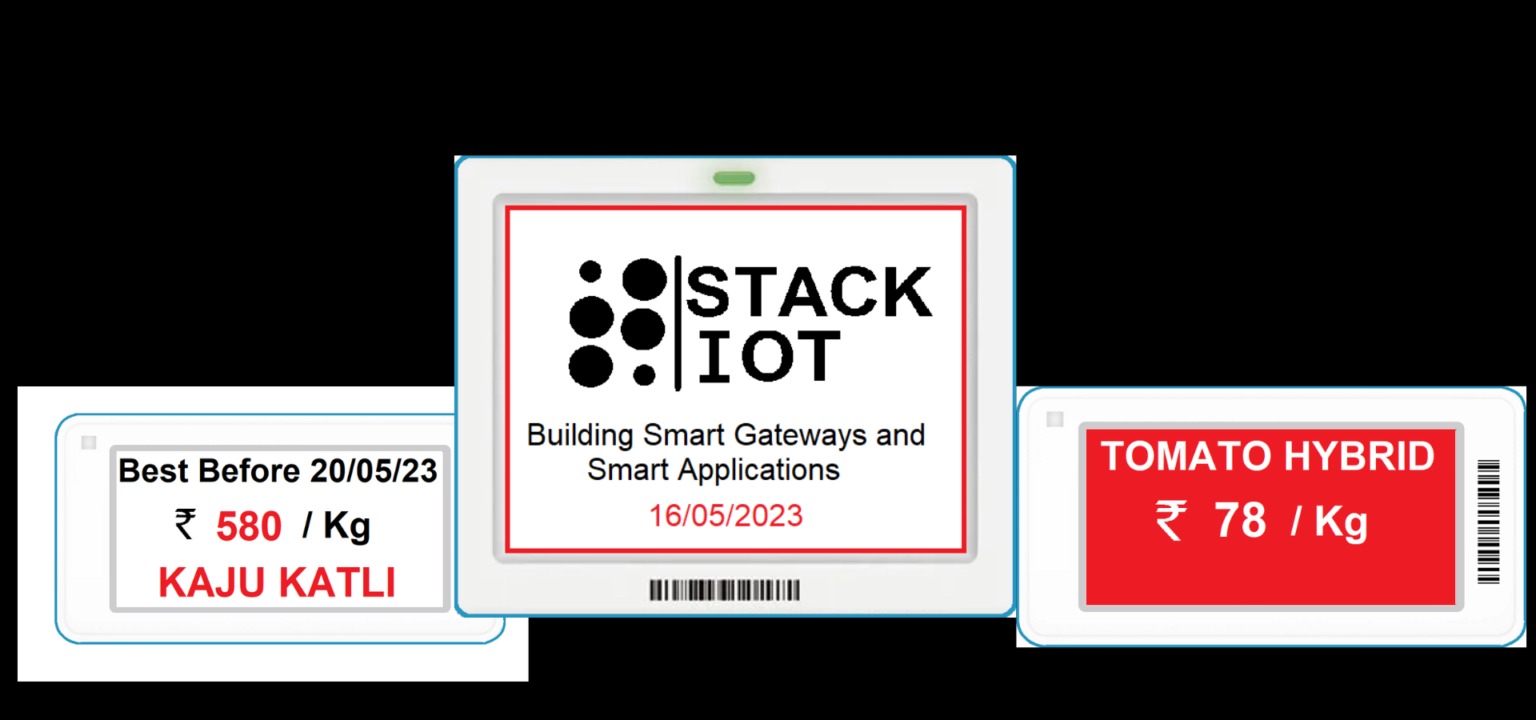In the fast-evolving retail landscape, efficiency, accuracy, and automation have become key drivers of success. One technology revolutionizing retail operations is electronic shelf labels (ESLs). As the world shifts towards smart stores and connected devices, ESLs—also known as digital price tags—are becoming essential tools for modern retailers. Powered by Stack IOT and other smart technologies, ESLs offer more than just digital displays; they represent a leap forward in retail innovation.
What Are Electronic Shelf Labels?
Electronic shelf labels are digital display devices—typically using e-ink or LCD technology—mounted on retail shelves to show product pricing and information. Unlike traditional paper tags, ESLs are connected to a centralized pricing system via wireless networks. This enables real-time updates of product information such as prices, discounts, stock levels, and barcodes.
The Rise of Digital Price Tags
With consumer expectations rapidly evolving, retailers must respond swiftly to price changes, promotions, and stock variations. Traditional methods, such as manually replacing paper tags, are slow, error-prone, and labor-intensive. This is where digital price tags come in.
ESLs streamline the process of updating product information across thousands of items in-store. Whether you need to change prices due to market trends, promotional events, or inventory adjustments, ESLs allow it to be done centrally—often with a single click. This not only saves time but also ensures pricing accuracy and consistency across all store locations.
How Do Electronic Shelf Labels Work?
Electronic shelf labels operate through a combination of hardware and software components, integrated through the Stack IOT infrastructure. Here’s a breakdown of how they work:
1. Centralized Pricing System
At the core of the ESL system is a pricing and inventory management software. This software connects to the retailer’s database and sends price updates to the ESL network.
2. Wireless Communication
ESLs use wireless communication protocols such as Zigbee, Wi-Fi, or proprietary RF (radio frequency) networks to receive data from the central server. Some advanced systems also utilize Bluetooth Low Energy (BLE) for enhanced range and energy efficiency.
3. Digital Display
Each ESL features a low-power display—commonly e-ink, similar to Kindle screens—which consumes energy only when content is updated. This ensures a long battery life, often lasting up to 5-7 years without replacement.
4. IoT Integration (Stack IOT)
Stack IOT provides the underlying framework that connects ESLs to other smart devices within the store ecosystem. For example, ESLs can sync with in-store sensors, mobile apps, and point-of-sale systems, creating a seamless retail experience. This integration also supports advanced analytics, helping retailers make data-driven decisions on pricing and inventory management.
5. Real-Time Updates
When a price change is made in the backend system, the update is transmitted instantly to all relevant ESLs. This eliminates pricing discrepancies, enhances customer trust, and reduces legal compliance issues.
Benefits of Electronic Shelf Labels
Implementing ESLs and digital price tags offers numerous benefits:
-
Efficiency: Automated updates save labor hours.
-
Accuracy: Eliminates human error in pricing.
-
Flexibility: Prices can be changed in real-time.
-
Customer Experience: Accurate and visible pricing improves satisfaction.
-
Sustainability: Reduces paper waste and operational overhead.
The Future of Retail with Stack IOT
As smart retail continues to evolve, Stack IOT is playing a pivotal role in building connected store ecosystems. Through real-time data exchange, predictive analytics, and automation, Stack IOT enhances the functionality of ESLs, driving the next generation of retail innovation.
From dynamic pricing to personalized offers, the possibilities with digital price tags are endless. As more retailers embrace these technologies, the shift towards smart, efficient, and sustainable shopping experiences becomes inevitable.
Conclusion
Electronic shelf labels are more than just an upgrade from paper tags—they are a vital part of the smart store revolution. Powered by Stack IOT and integrated digital systems, digital price tags bring efficiency, accuracy, and interactivity to the retail floor. As technology continues to advance, ESLs will become standard in stores seeking to stay competitive in the digital age.
